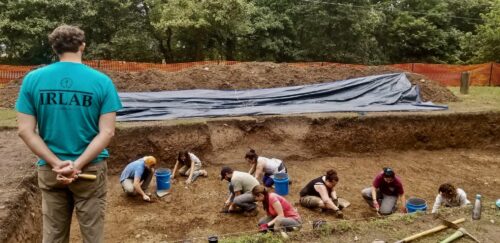
Cholera in 19th Century America: Lessons for the Current Pandemic?
When Rebecca McGinnis chose the recurrent cholera epidemics of the nineteenth century as the focus of her Master’s thesis, she saw it as way to understand the history of her hometown—Circleville, in Pickaway County, Ohio—and of the Ohio and Erie Canal system that connected the county to markets in Cleveland and beyond. She did not imagine her thesis would provide her a framework for understanding a new pandemic, one that that gripped the entire nation in March of 2020.
An International Team Begins Research in Central Ohio
McGinnis was looking for a thesis topic when she visited a local archaeological dig at an abandoned cemetery just outside the city limits. The excavation team, members of the Institute for Research and Learning in Archaeology and Bio-archaeology (IRLAB), had invited local educators to come and observe their work. McGinnis quickly grew fascinated.
Known locally as “the Harrison Township Cholera Cemetery,” the burial site had been established in 1804 by the earliest settlers in the area, but ceased being maintained a few years after the burial of victims of an 1849 cholera outbreak. Before the cause of cholera was well understood, fearful communities often abandoned the burial sites of victims, fearing that vapors from the ground transmitted the disease.
IRLAB’s excavation work aims at reconstructing an unrecorded epidemiological history, with the ultimate aim of learning more about the disease itself, in hopes of improving modern efforts to prevent and treat the disease.
Talking with the head of the excavation, McGinnis heard his “frustration over the lack of historical research on cholera in the area.” McGinnis offered to help the investigators by undertaking the historical detective work. She had found her thesis topic.
Hearing a Need, Finding Direction
It was not the first time McGinnis found direction by paying attention when others pointed out a need.
Read more at Meet Our Teacher Partners.


